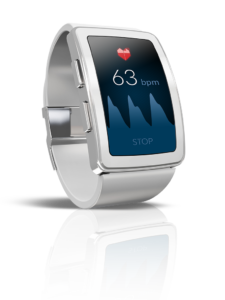
The results of the WATCH AF trial, the world’s first international, prospective and double-blinded clinical trial (ClinicalTrials.gov ID: NCT02956343) evaluating the accuracy of a smartwatch to detect atrial fibrillation were announced at the European Heart Rhythm Association Congress. (EHRA 2018; 18–20 March, Barcelona, Spain). Preventicus, a German based company, provided the application for blinded analysis of one minute plethysmographic raw data (recorded with Samsung Gear Fit II smartwatch) of 636 study participants. Total accuracy of the application was 95.7% with a positive predictive value of 97.8% in comparison to the ECG based diagnosis of two cardiologists by mutual agreement.
The smartwatch application “Preventicus Nightwatch®” incorporates that algorithm. It can continuously 24/7 analyse plethysmographic raw data and document atrial fibrillation events lasting at least one minute. The application will be launched in Europe as a certified medical device.
The same atrial fibrillation detection algorithm is already available in a smartphone camera application (“Preventicus® Heartbeats”, a CE marked medical device in the EU). The results of the corresponding DETECT AF PRO trial (ClinicalTrials.gov ID: NCT02949180) were introduced for the first time at EHRA as well. DETECT AF PRO is a separate trial from WATCH AF and is a prospective, double-blinded international study as well with 672 participants. Total accuracy of the smartphone camera application to detect atrial fibrillation was 96.5% with a positive predictive value of 99.3% compared to the ECG based diagnosis of two cardiologists by mutual agreement.
Atrial fibrillation events detected by the Preventicus algorithm are accessible on a dedicated ICT platform, allowing medical professionals to oversee their patients using the new technology. The Preventicus algorithm analyses every single heartbeat recorded and classifies it as regular or irregular. The resulting report enables medical professionals to beat by beat comprehend the recorded events.
For more information click here.









